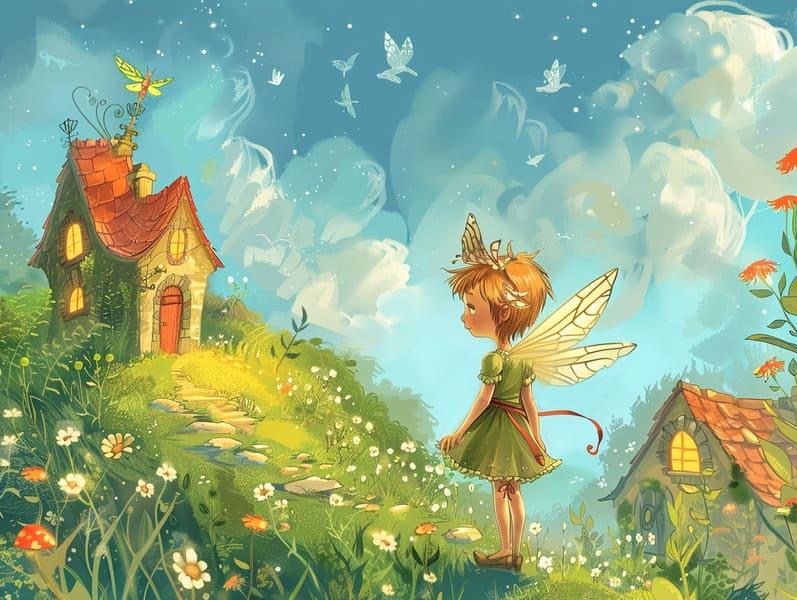Understanding the Legacy of Timeless Fairy Tales and Their Steadfast Grace.
Understanding the Legacy of Timeless Fairy Tales and Their Steadfast Grace.
Blog Article

Timeless fairy tales have deep roots. These stories have been narrated from one generation to the next well before they were ever put on paper. They developed from a variety of civilizations, including Indigenous traditions. They were initially transmitted among elders, often carrying themes and messages related to the societal norms and beliefs of the time.
The famous Grimm duo, the two Grimm brothers, were among the first to compile many of these beloved tales. Their compilation, "Grimm's Children's Stories," included stories like "The Story of Cinderella," "Little Brother and Little Sister," and "The True Story of Snow White," which have since become classics in the world of traditional fairy tales. Similarly, Andersen's fantastical narratives, such as "The Story of the Little Mermaid," and "The Duckling that Could," have enchanted hearts worldwide, securing their place in the pantheon of timeless fairy tales.
Despite being ancient, these stories remain as pertinent as ever, especially as kids' bedtime tales. These magical stories are now available in many formats, including colorful picture books, captivating animations, and free fairy tales online.
Their lasting appeal can be ascribed to several magical reasons:
Ethical Lessons: Ancient fairy tales often provide important moral lessons. Fairy tales like "The Shepherd Boy and the Wolf" teach the importance of sincerity, while "The Story of the Tortoise and the Hare" point out the qualities of resolve and humbleness. These narratives offer the young clear distinctions between ethical and unethical, helping to shape their moral compass in a kind yet profound way.
Empathy and Understanding: Old fairy tales frequently include personalities facing tests and troubles, inspiring children to resonate with their struggles and back their triumphs. For instance, "The Story of Beauty and the Beast" teaches us the significance of looking past the exterior to understand the true character of a being, nurturing perception and knowledge.
Cultural Recognition: Many timeless fairy tales are rich in the cultural contexts from which they grew. Reading these tales can provide fascinating glimpses into different customs, building a sense of cultural understanding and comprehension.
Inventiveness and Imagination: The imaginative elements in ancient fairy tales—spells and potions—ignite children’s dreaming abilities. These stories move readers to supernatural realms, promoting creative thinking and a sense of awe that lasts a lifetime.
Timeless fairy tales are not only magical but also edifying. They provide fascinating tools in building various mind and heart abilities in kids. When traditional fairy tales are voiced, they foster speech development by offering new vocabulary and elaborate sentence structures. This practice also cultivates auditory skills and mindfulness, as kids concentrate deeply, anticipating to see what happens next.
Furthermore, talking about the themes and characters of old fairy tales read more can nurture intellectual skills and reasoning skills. Young ones are instructed to recognize patterns, forecast, and understand cause and effect. These discussions also assist young readers convey their thoughts and feelings, fostering their emotional intelligence.
In today’s electronic age, the abundance of internet fairy tales has made these stories more reachable than ever. Web-based platforms and digital apps offer extensive collections of popular fairy tales that can be explored or heard anytime, anywhere. Fairy tales read out loud are particularly favored, supplying an interactive way for children to engage with these charming stories. Sound books and voiced videos take characters and settings to life, often joined by mesmerizing audio effects and background music that intensify the narrative journey.
The everlasting appeal of timeless fairy tales lies in their ability to adapt to new eras while preserving their central messages. Contemporary takes of these narratives often bring in more varied figures and modern settings, making them relevant to today’s audience. However, the central morals of braveness, charity, and honesty remain unchanged, continuing to resonate with young listeners of all ages.
Traditional fairy tales also offer a sense of assurance and closeness. They extend a systematic narrative with a distinct beginning, middle, and end, often wrapping up with the culmination of conflicts and the triumph of honesty over deceit. This certainty can be relieving for little ones, making available a sense of constancy in an fluctuating world.
Old fairy tales continue to delight and inform new generations, maintaining their splendor and value in modern society. As children's night stories, they afford a perfect blend of fascination and comprehension, enhancing moral values, empathy, and creativity. The presence of digital fairy tales and the well-liked nature of fairy tales read aloud validate that these traditional tales remain accessible to new generations.
By keeping and sharing these stories, we continue to appreciate the rich tapestry of fantasy and cultural heritage. Whether you are reading a beautifully illustrated book, delving into a electronic library, or playing an read-aloud story, the charm of traditional fairy tales is always within reach. These tales teach us of the unending effect of narratives and its ability to join us across generations and cultures.
Regardless if you are perusing a vibrantly illustrated book, perusing a electronic library, or hearing an sound book, the attraction of Grimm's fairy tales is always within reach.
These fairy tales convey of the endless essence of fairy tales and its ability to bind us across eras and regions, weaving a spell that charms and informs alike.